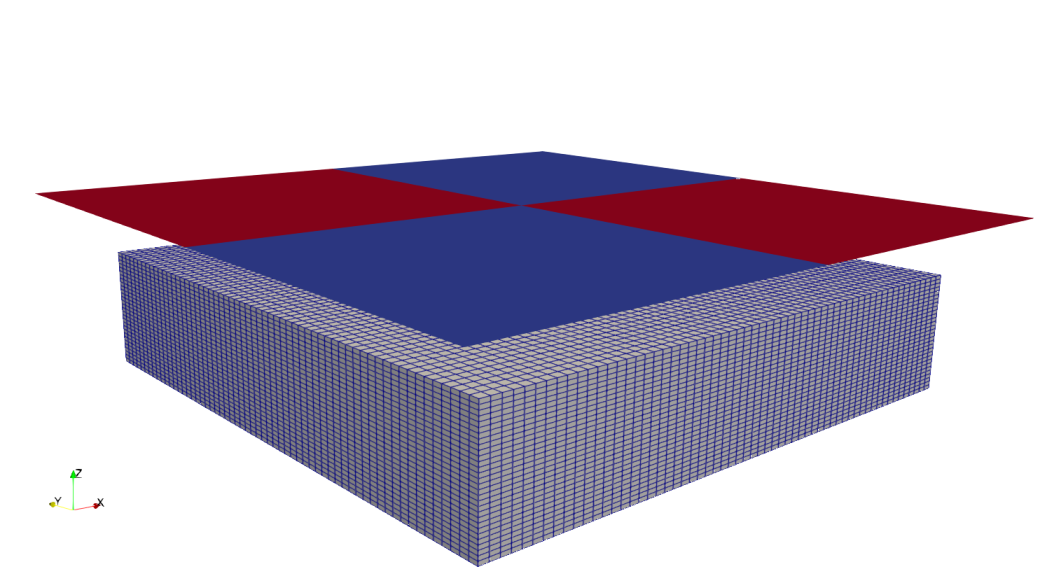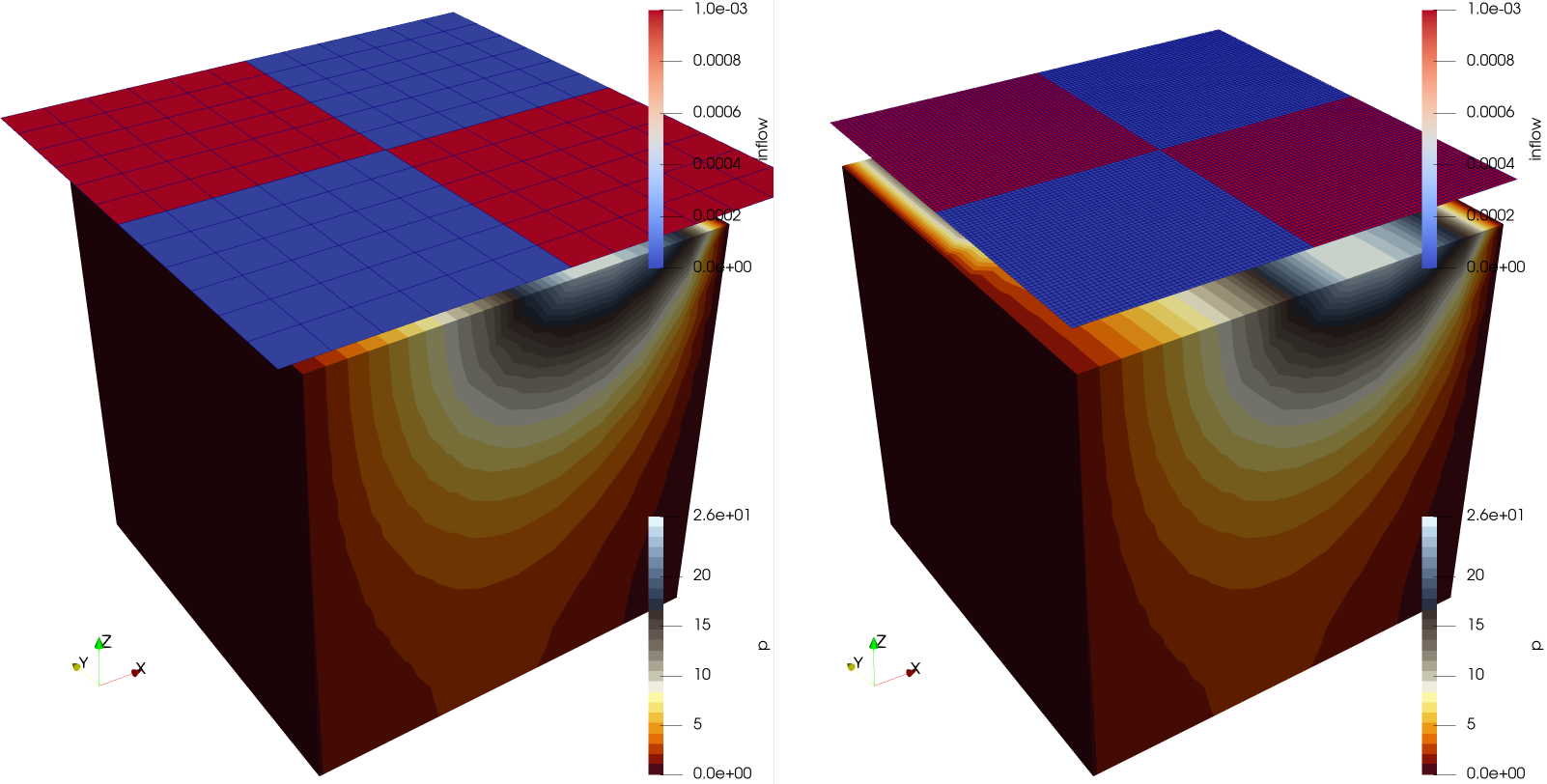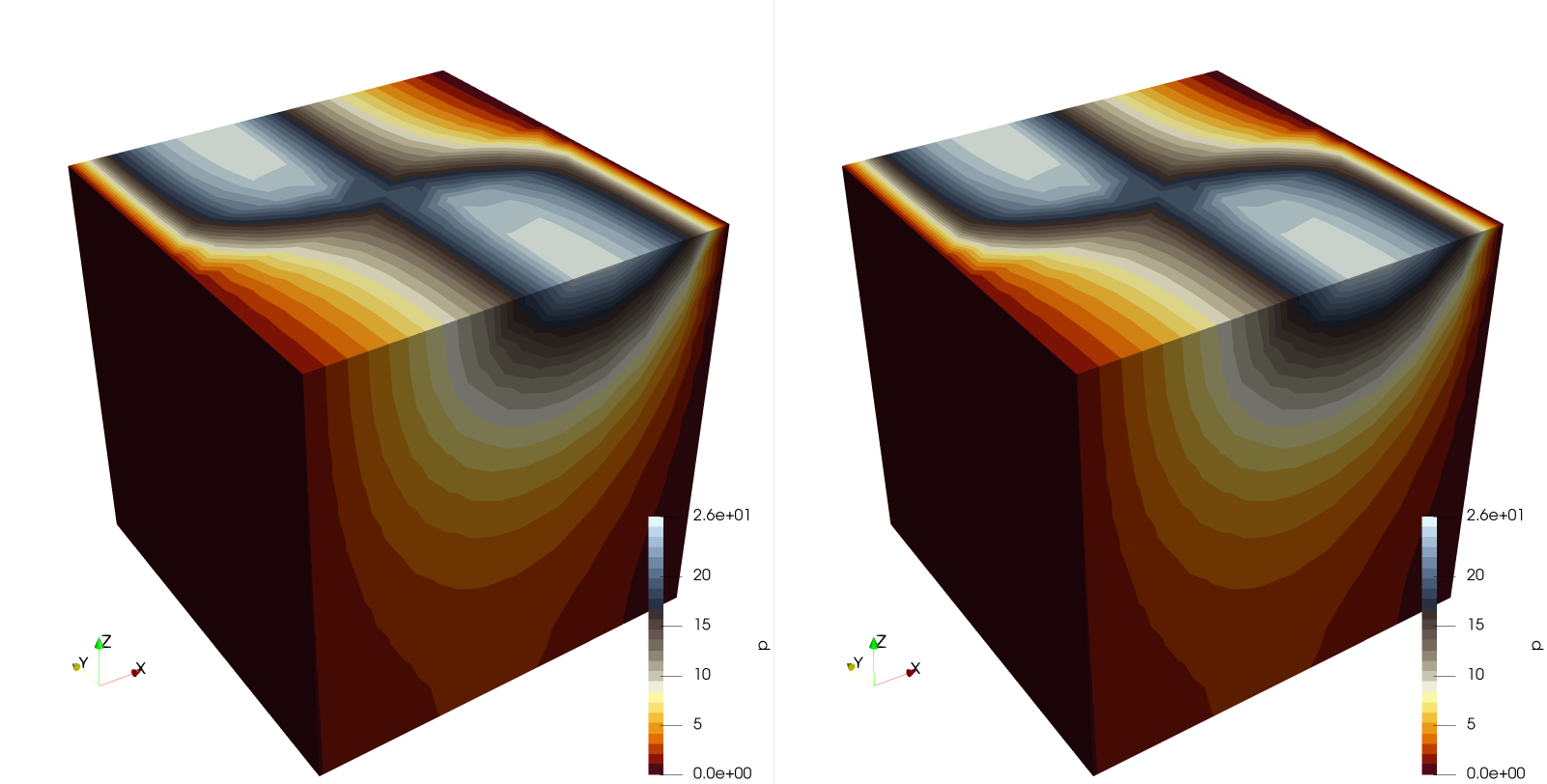Liquid flow with raster parameter based boundary condition
Motivation
Specifying spatially and temporally heterogeneous parameters for models with fine mesh resolution and many time steps can lead to very large input files.
For instance, let us assume that the discretization of the study domain contains n elements and that t time steps should be simulated. Hence, you need $n \times t$ storage space.
For instance, sometimes the spatial distribution of the boundary values is given by raster data with a different spatial resolution than the subdomain mesh on which the boundary values are to be set. In such cases, the raster parameter can be used both to reduce the memory footprint of the input data enormously and also to avoid time-consuming preprocessing.
In the figure, the 2x2 raster contains 4 raster cells or 4 (possible different)
values. In the example illustration, each raster grid cell covers 225 surface
elements. If we were to store this information directly in the surface mesh, we
would need about 225 times more memory.

Examples
The first simple example should demonstrate the application of a boundary condition based on the raster parameter. We start with homogeneous parabolic problem:
$$ \begin{equation} s\\;\frac{\partial p}{\partial t} + k\\; \Delta p = q(t,x) \quad \text{in }\Omega \end{equation} $$w.r.t boundary conditions
$$ \eqalign{ p(t, x) = g_D(t, x) &\quad \text{on }\Gamma_D,\cr k\\;{\partial p(x) \over \partial n} = g_N(x) &\quad \text{on }\Gamma_N, }$$The domain $\Omega = [0,1]^3$ is a cube. Dirichlet-type boundary conditions are set on the left ($x=0$) side and the right ($x=1$) side of the cube. On the top a Neumann-type boundary condition is set by a raster parameter. Here, simulations of two almost identical models are conducted. The only difference is the raster used for setting the boundary condition. The first simulation is done with a coarse raster as input for the boundary condition, the second one is executed with a fine raster as input.
Specification in OGS project file
In the parameter specification section of the project file it is possible to add
a parameter type with the type Raster.
Step 1: Loading raster data
<rasters>
<raster>
<file>RasterFileName.nc</file>
<variable>VariableInNetCDFFile</variable>
<dimenension>DimensionOfVariable</dimension> <!-- optional; default 1 -->
</raster>
</rasters>A snippet from a project file looks is:
<rasters>
<raster>
<file>recharge_GDM_DE1_1951-2019_monthly_dailymean_mm_per_day_EPSG25832.nc</file>
<variable>recharge</variable>
<dimenension>1</dimension>
</raster>
</rasters>Step 2: Creating parameter from the loaded raster data
The name of the raster parameter shall be constructed as follows:
RasterFileName_VariableInNetCDFFile_DimensionOfVariable
<parameter>
<name>RasterFileName_VariableInNetCDFFile_DimensionOfVariable</name>
<type>Raster</type>
</parameter>The corresponding snippet from a project file would be:
<parameter>
<name>recharge_GDM_DE1_1951-2019_monthly_dailymean_mm_per_day_EPSG25832_recharge_1</name>
<type>Raster</type>
</parameter>Step 3: Using the parameter in boundary condition specification
<boundary_condition>
<mesh>Subsurface_Top</mesh>
<type>Neumann</type>
<parameter>RasterFileName_VariableInNetCDFFile_DimensionOfVariable</parameter>
</boundary_condition>In an practical example the corresponding XML description of the boundary condition is then:
<boundary_condition>
<mesh>Subsurface_Top</mesh>
<type>Neumann</type>
<parameter>recharge_GDM_DE1_1951-2019_monthly_dailymean_mm_per_day_EPSG25832_recharge_1</parameter>
</boundary_condition>Results
 The pressure distribution within the domain is depicted in the following figure
(again left: coarse raster input; right: fine raster input). The distributions
are identical up to machine precision.
The pressure distribution within the domain is depicted in the following figure
(again left: coarse raster input; right: fine raster input). The distributions
are identical up to machine precision.

This article was written by Thomas Fischer. If you are missing something or you find an error please let us know.
Generated with Hugo 0.122.0
in CI job 570044
|
Last revision: April 17, 2025
Commit: Rewrite using ranges 1ed34f4
| Edit this page on